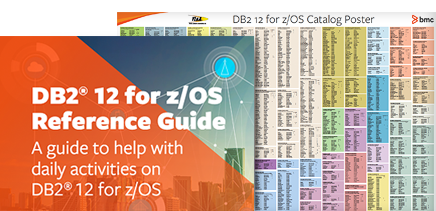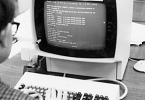
While most of us are looking forward to the impending announcement from IBM as to when DB2 12 will be generally available, it’s worth taking a moment to look back over our shoulder. Not everyone sees DB2 12 on their immediate horizon and not everyone is yet safely migrated to DB2 11. If you have not migrated to DB2 11, read on.
IBM have announced that DB2 10 will cease to be supported from September 30, 2017 – a little over a year from now. So this defines the date by which EVERYONE should be migrated to DB2 11. At that point, the only DB2 versions fully supported by IBM will be DB2 11 and DB2 12 – unless you have made specific arrangements with IBM, that is.
It can take a typical DB2 installation (whatever one of those is) 6-12 months to migrate all of their subsystems from one DB2 version to another, so it is time to be making those migration plans on how to get to DB2 11 from where you are. Do not let the September 30 date become your deadline; plan to be safely on DB2 11 with a comfortable window before IBM ceases support. Bear in mind that you will have to progress through the three-phase migration process (CM, ENFM and NFM in turn) which just by itself can extend the time it takes to migrate – especially if you are also going to verify that it is possible to fall BACK from DB2 11 to DB2 10, or between any of the migration modes. On the bright side though, this will be the last time a DB2 migration will be handled this way. IBM have already told us there will be a single phase migration again for the step from DB2 11 to DB2 12.
If you have third-party tools, you will probably need to upgrade those when you migrate. For those of you who are BMC customers, you will need to be running with v11.1 version (or later) of our tools, although we recommend that you install the most recent release. Version 10 and earlier BMC tools do not support running in a DB2 11 environment. Other tools vendors probably have a similar minimum version statement for their tools to run with DB2 11. Remember, you will likely have to migrate all your tools to a DB2 11 compatible version before you start the actual DB2 version migration itself. Make sure you factor this into your DB2 upgrade plans.
If you are running DB2 9 or earlier, you have a whole different set of problems. Firstly, IBM withdrew DB2 10 from marketing on July 6, 2015 so it is already too late to order DB2 10 media. Secondly, you must migrate to DB2 10 to get to DB2 11 and beyond. There is no skip-migration available from DB2 9 to DB2 11 (or from DB2 10 to DB2 12 for that matter. The only recognized migration path is one version upgrade at a time until you reach DB2 12). Finally don’t forget, your journey to DB2 11 still has to be completed before September 30, 2017.
There is one ray of sunshine on the horizon. At IDUG North America in Austin, IBM talked about a possibility of shipping new function in DB2 continuously in the future. This infers that they would use DB2 12 as a base and incrementally add new abilities to it over time. So it just may well become much easier (and much faster) to get access to new DB2 functionality without necessarily going through the effort and complexity of migrating to a new release. IBM will be talking about this new delivery model on a webcast scheduled for Tuesday September 27th. Here is the title and link: DB2 for z/OS – Delivering New Capabilities Faster for Increased Productivity.
Finally, this makes me wonder whether anyone in our worldwide community has migrated DB2 subsystems through all 14 DB2 version changes there have been over the last 30+ years (1 -> 1.2 -> 1.3 -> 2.1 -> 2.2 -> 2.3 -> 3 -> 4 -> 5 -> 6 -> 7 -> 8 -> 9 -> 10 -> 11). When you look back over all those different versions, it’s been an amazing ride so far – and it makes you wonder what IBM have in their plans for the future of DB2.






